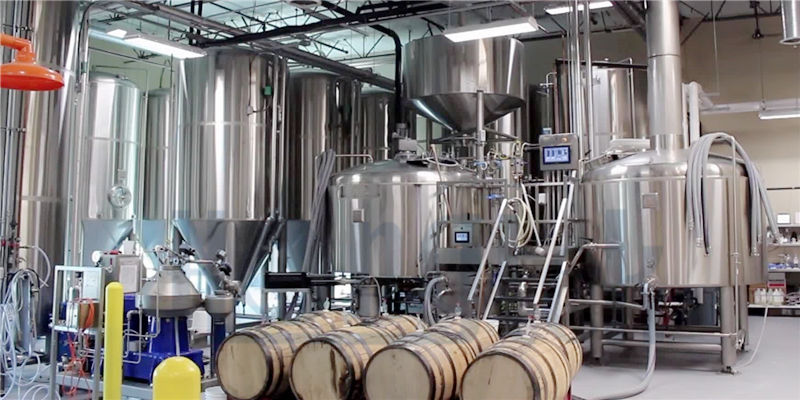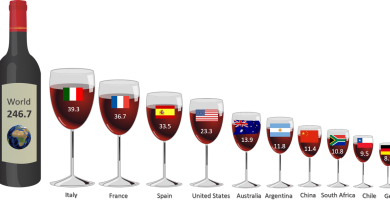Why filter wine?
Wine is sifted to eliminate silt like grape solids, dead yeast cells, or solidified acids, bringing about a more charming drinking experience. Filtration can likewise work on wine’s flavor, and it builds its timeframe of realistic usability by eliminating microorganisms.
However, separating wine is certainly not an important piece of winemaking. A few winemakers postpone it completely to make normal, vegetarian, or biodynamic wines. In the accompanying sections, we will examine the advantages and disadvantages of separated wine.
WHY Is wine Filtered?
There are different motivations to channel wine. One is to eliminate residue that is structured during the winemaking system. Dregs can be particles from grape skins, stems, or seeds, solidified acids, tannins, or dead yeast cells. To forestall a horrendous abrasive drinking experience, winemakers channel their wines to eliminate this residue.
Sifting can likewise influence a wine’s taste. At the point when cruel tannins are sifted through, the wine in general becomes milder and less astringent. It is likewise conceivable to eliminate explicit acids to make the wine less acrid.
One more justification for separating wine is the evacuation of microorganisms. While these organic entities are not hurtful to people, they can make the wine go off quicker. Accordingly, numerous winemakers decide to eliminate them.
Obviously, the filtration cycle likewise changes a wine’s appearance. It becomes more clear and more splendid. Interestingly, unfiltered wines might seem overcast.
When Is Wine Filtered?
Sifting wine can occur at various phases of the winemaking system. By and large, vintners perform it toward the finish of the interaction, preceding packaging. Right now, they can separate the silt that is framed during the maturation and the maturing system and furthermore advance the flavor.
All things considered, they could choose to do it prior, for example, after the maturation or during the barrel maturing process.
What Is The Difference Between Filtered AND unfiltered Wine?
There are a few distinctions between separated and unfiltered wines:
Intelligently, the creative interaction is unique. Sifted wines go through an extra step during which vintners separate the dregs. As unfiltered wines don’t go through this cycle, less time and work are important to make them.
Numerous winemakers utilize creature items like gelatine, isinglass, or casein in the sifting system. Albeit these substances don’t remain in the wine, they are not satisfactory for individuals who follow a veggie-lover diet. Then again, unfiltered wines regularly qualify as vegetarian wines.
Unfiltered wines seem shady now and again, like a normal squeezed apple. While whirling them, you could see the silt moving around. Interestingly, sifted wines are clear and regularly contain next to zero residues.
As unfiltered wines could contain a lot of residues, they can give you a dirty mouthfeel while drinking them. For sifted wines, having this experience is somewhat far-fetched.
Is It Necessary to Filter Wine?
According to a clinical perspective, sifting wine isn’t required. Dregs, for example, grape solids are not unsafe for people. Nonetheless, they can make a dirty mouthfeel that wine sweethearts think about obnoxiously. Additionally, wine with silt could seem overcast, and many individuals could do without that. In this way, vintners channel their wines to give a superior look and drinking experience.
Is Unfiltered Wine Safe to Drink?
Unfiltered wine is completely protected to drink. As referenced previously, dregs are no clinical gamble and won’t actually hurt any. Their possible impact is a possibly coarse mouthfeel while drinking the wine. Other than that, you don’t need to stress over the well-being effect of an unfiltered wine.
Does Filtering Wine Remove Sulfites?
The sifting system that wine goes through prior to packaging doesn’t eliminate sulfites. It just concentrates particles that may be repulsive for consumers. Yet, it doesn’t affect the sulfite content of the wine by any stretch of the imagination.
Significant wine normally contains just limited quantities of sulfite. In any case, numerous vintners add sulfites misleadingly to build the wine’s time span of usability. On the off chance that you lean toward low-sulfite wines, go for normal, low-mediation, natural, or biodynamic wines.
You could go over gadgets or substances intended to eliminate sulfites from wine prior to drinking it. Among them are purifiers that you can append to the bottleneck, channel films, wands to whirl in your glass, and showers. Whether these things really diminish sulfite contents is questionable.
How Is wine Filtered?
Actually talking, there are two general ways to deal with eliminating dregs from wine: separating and fining. Vintners frequently utilize the two of them to enhance their wines.
During the filtration interaction, the wine is traveled through a material like an espresso channel. It has minuscule pores with the goal that fluids can travel through. Yet, particles are kept down and sifted through. Channel films are accessible in different sizes. Some channel just greater particles, however, others even eliminate microorganisms from the wine. It is entirely expected that wine goes through various sifting occurrences with layers of various sizes.
Wine fining expects to eliminate even the littlest particles and upgrade the flavor simultaneously. Winemakers can separate solidified acids or tannins by adding substances like gelatine, casein, or isinglass to the wine. These materials tie themselves actually to the particles, structure greater groups, and sink to the lower part of the vessel. The winemaker then, at that point, racks the wine to isolate these groups from it.
Is Wine Filtered through Animal Bones?
Vintners don’t utilize creature issues that remain to be worked out in their wines. Nonetheless, probably the most well-known fining specialists incorporate gelatin. Gelatin is produced using collagen, and collagen is really removed from creature bones. Particularly pig bones are utilized for this reason.
Is Wine Filtered through Fish Bladders?
Wine isn’t sifted through fish bladders in a real sense. Yet, a few vintners use isinglass, one more type of collagen, which for sure is gotten from dried swim bladders of fish. Especially the bladders of sturgeons are great wellsprings of isinglass.
Is Wine Filtered through Fish Scales?
Dissimilar to fish bladders, fish scales convey no materials for fining wine.
Is Wine Filtered through Eggs?
Egg whites, a protein acquired from egg whites, are a typical fining specialist for wine. As it has magnificent capacities of eliminating tannin particles, vintners frequently use it for separating their red wines. Thusly, the subsequent wines get friendlier and more severe.
Is Wine Filtered through Milk?
Like creature bones or fish bladders, milk isn’t utilized as a separating specialist. Yet, one of its parts is casein. This protein sticks to other protein atoms, like dead yeast cells. It then, at that point, structures greater groups that sink to the lower part of the wine compartment, permitting vintners to effortlessly extricate them.
Is Wine Filtered through Pig Intestines?
Winemakers don’t utilize pig digestive organs to channel their wines, and they don’t utilize items acquired from pig digestive organs by the same token. They could utilize gelatine removed from pig bones now and again. Furthermore, there are no fining specialists produced using pig items.




